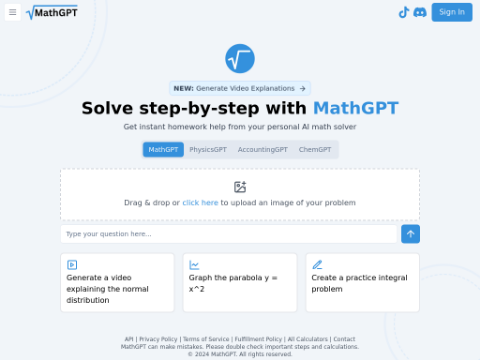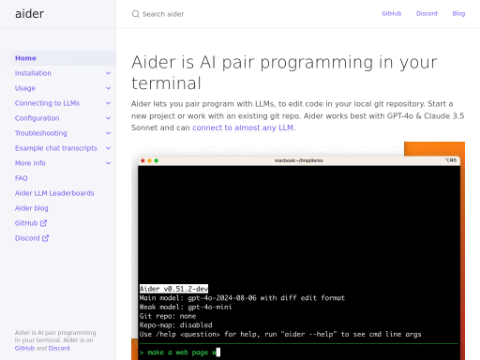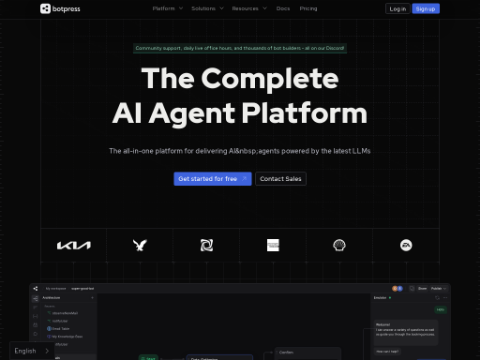Multi-modal artificial intelligence (AI) focuses on developing models that can handle and integrate multiple types of data, such as text and images. These models are crucial for answering visual questions and generating descriptive text for images, highlighting the AI's ability to understand and interact with complex worlds. Integrating information from different modalities allows AI to perform complex tasks more effectively, demonstrating significant potential in both research and practical applications.
One of the main challenges of multi-modal AI is optimizing model efficiency. Traditional methods use modality-specific encoders or decoders to fuse information, often limiting the model's ability to effectively integrate different types of data. This limitation leads to increased computational demands and decreased performance efficiency. Researchers have been working on developing new architectures that seamlessly integrate text and image data from the beginning to improve the performance and efficiency of models when processing multi-modal inputs.
Existing methods for handling mixed modality data include pre-processing and separately encoding text and image data architectures, and then integrating them. While these methods are functional, they are computationally intensive and may only partially utilize the potential of early data fusion. Modality separation often leads to inefficiency and an inability to fully capture the complex relationships between different data types. Therefore, innovative solutions are needed to overcome these challenges and achieve better performance.
To address these challenges, researchers at Meta have introduced MoMa, a novel Modality-aware Mixture of Experts (MoE) architecture aimed at pre-training early fusion language models for mixed modality. MoMa divides expert modules into modality-specific groups to process text and images in any order. Each group specializes in handling specific tokens, utilizing learned routing to maintain semantic awareness within each group. This architecture significantly improves pre-training efficiency and has demonstrated significant gains in experiments. The Meta team's research showcases the potential of MoMa in advancing mixed modality language models.
The technology behind MoMa combines Mixture of Experts (MoE) and Mixture of Depth (MoD) techniques. In MoE, tokens are routed to a group of feed-forward blocks (experts) at each layer. These experts are divided into text-specific and image-specific groups, allowing for specialized processing paths. This approach, known as modality-aware sparsity, enhances the model's ability to capture modality-specific features while maintaining cross-modal integration through shared self-attention mechanisms. Additionally, MoD allows tokens to selectively skip computations in certain layers, further optimizing processing efficiency.
MoMa's performance has been extensively evaluated, showing significant improvements in both efficiency and effectiveness. With a training budget of 1 trillion tokens, the MoMa 1.4B model, which includes 4 text experts and 4 image experts, achieved a 3.7x reduction in overall floating-point operations per second (FLOPs) compared to the dense baseline. Specifically, text processing was reduced by 2.6x, and image processing was reduced by 5.2x. When combined with MoD, the overall FLOPs savings increased to 4.2x, with text processing improving by 3.4x and image processing improving by 5.3x. These results highlight the potential of MoMa in enhancing the efficiency of pre-training mixed modality language models.
MoMa's innovative architecture represents a significant advancement in multi-modal AI. By integrating modality-specific experts and advanced routing techniques, researchers have developed a more resource-efficient AI model that maintains high performance across diverse tasks. This innovation addresses critical computational efficiency issues and paves the way for the development of more capable and resource-efficient multi-modal AI systems. The team's work demonstrates the potential for future research to build upon this foundation, exploring more complex routing mechanisms and extending the approach to more modalities and tasks.
In conclusion, the MoMa architecture developed by Meta researchers offers a promising solution to the computational challenges in multi-modal AI. This approach leverages modality-aware mixture of experts and mixture of depth techniques to achieve significant efficiency improvements while maintaining strong performance. This breakthrough paves the way for next-generation multi-modal AI models to handle and integrate multiple types of data more effectively and efficiently, enhancing AI's understanding and interaction with complex multi-modal worlds.








